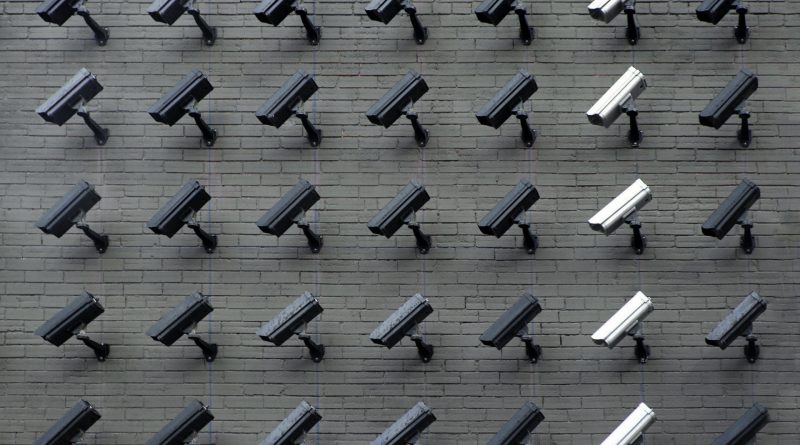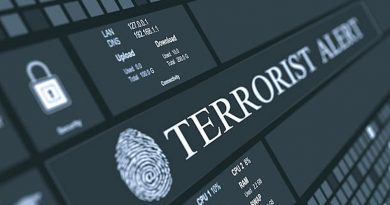Why mass surveillance is an undesirable method for counter-terrorism
The field of security and intelligence, especially the area of counter-terrorism, is no exception to the current technological advances: technology development, surveillance included, is an asset for both the perpetrators and counter-terrorism authorities. The use of the internet and artificial intelligence is enhancing cyberattacks, making them more precise and harder to counter.
The phenomenon of surveillance is not new: it dates back to the 17th and 18th centuries with the emergence of new instruments of power and surveillance, generally represented by Jeremy Bentham’s model of the panopticon (1785).
However, the connection between surveillance and security has grown due to the threat of terrorism. After the September 11 terror attacks (2001) and the declaration of George W. Bush and Dick Cheney’s “war of terror” doctrine (2002), surveillance technologies were increasingly justified in the name of preventing the likelihood of a terrorist attack. Traditional methods of surveillance (as CCTV cameras) were being gradually surpassed by the adoption of biometrics and what has been identified as “dataveillance”: the mass monitoring or surveillance of multiple forms of data – e.g. electronic tagging; financial transactions; travel patterns; fingerprinting – for purposes of identifying potential “risky” groups or individuals, as well as “suspicious behaviours”. Recently, the 2013 leaks from former NSA agent Edward Snowden amplified the public discussion about mass surveillance.
This article aims to briefly explain why the deployment of these technologies is a flawed security measure for counter-terrorism. Although not exclusively, here we define terrorism as the perpetration of violence by non-state actors against a state, in order to achieve political purposes. Counter-terrorism engages a variety of actors and refers to the strategies, policies and programmes, aimed at tackling many aspects related to the threat of terrorism, such as the root causes; radicalisation of individuals; financing of terrorism groups; networks…etc.
Mass surveillance and counter-terrorism
Michael Chertoff, former US Secretary of Homeland Security (2005-2009), justified the “greater use of biometrics” by arguing: “After September 11, we used credit card and telephone records to identify those linked with hijackers. But wouldn’t it be better to identify such connections before a hijacker boards a plane?”
It seems reasonable, right? Not really. Surveillance may generate useful, hence preventive, intelligence but the excessive monitoring and “mining” of data, for the specific purpose of counter-terrorism, represents an undesirable security measure. We briefly present three reasons.
-
States give away their advantage.
It may seem paradoxical but it is not. First, non-state terrorism is a form of asymmetric warfare, meaning that there is a conflict between opponents with unequal capabilities and power. In principle, the state is the strongest. So, by pushing for harder security measures, including dataveillance, the state is revealing its vulnerability, losing its advantage to the terrorist group.
Second, linked to first argument, terrorists are eager to provoke an overreaction. Mass surveillance, along with the adoption of other exceptionalist security measures, is exactly what terrorists want.
Third, from the public’s perspective, it raises important questions about the state’s national security as well as its foreign policy, while possibly contributing to amplify the feelings of insecurity. To quote Snowden, “terrorism provokes an emotional response that allows people to rationalize and authorize programs they wouldn’t have otherwise.” Are states gambling with fear in order to maximize their political power? Are we really fighting against terrorism?
-
It is an illusion of protection.
First, no one is born a terrorist and there is no terrorist profile. Although there are certain psychological and behavioural common traits between terrorists, each individual has its own radicalisation path, which combines a complex set of reasons, ranging from political, to social to psychological. So, justifying mass surveillance “to keep track of possible terrorists” is a relatively flawed logic.
Second, most intelligence agencies do not have enough resources to keep track of all the suspects in their “terror watchlist”. For instance, in 2015, France had around 15.000 targeted individuals, the majority linked to radical Islamism, suspected of being radicalised or in high risk.
Third, related to the previous argument, most terrorists are known before perpetrating the attack. The Intercept reports numerous examples “from Boston to Paris.” This argument might be in favour of mass surveillance but it hides a different truth: if they were suspected, why were the authorities unable to prevent the attack? The answer to this question lies in the analysis of different factors such as geography, legislation or even timing, but we should take these examples as starting points to revise our mechanisms of surveillance.
Fourth, there is no proven evidence of mass surveillance efficacy in stopping a terrorist attack.
Fifth, recruitment and radicalisation strategies have become more digitalized but they still rely on face-to-face interactions. So, although surveillance is a potential asset to counter this growing phenomenon, counter-radicalisation strategies focused on dismantling those human connections should be privileged.
-
It undermines human rights.
Mass surveillance might produce (or enhance) fear and threatens basic human rights. As previously highlighted, fear feeds terrorism but also triggers unpredictability (everyone reacts differently), therefore is it a variable which hampers counter-terrorism efforts and adds doubts about the state’s management of security threats.
The issue of human rights is one of the most pressing and covers pretty much of the discussion regarding mass surveillance: its use raises serious questions about fundamental civil liberties, as the right to privacy. According to the United Nations (A/71/834), “while mass surveillance techniques may generate useful intelligence, this is not an adequate human rights law justification for their use, nor does it render mass surveillance lawful or reasonable.”
Conclusion
There are other reasons to disapprove the use of mass surveillance technologies for counter-terrorism. These techniques may generate useful information but, for such purposes, they appear to be flawed and counterproductive.
This text was previously published here.
The opinions expressed in this text are solely the author’s point of view and do not bind the Center for International Studies, its Director or any other researcher. Photo by Lianhao Qu on Unsplash
![]() This work is licensed under a Creative Commons Attribution-NonCommercial-ShareAlike 4.0 International License.
This work is licensed under a Creative Commons Attribution-NonCommercial-ShareAlike 4.0 International License.




